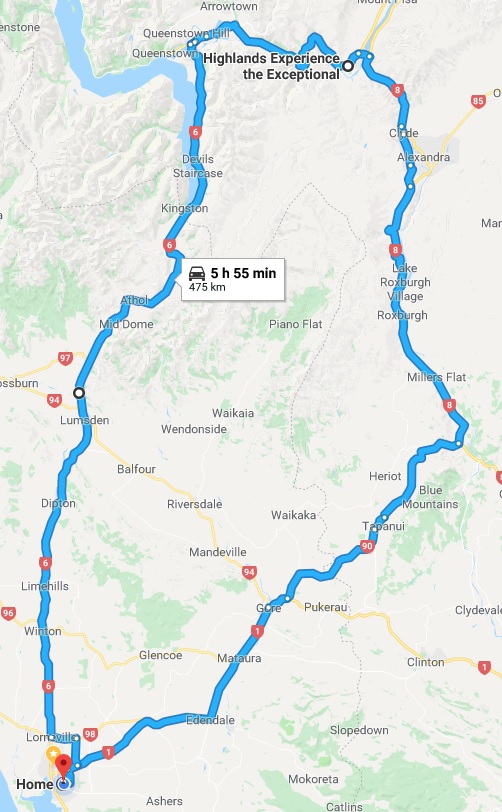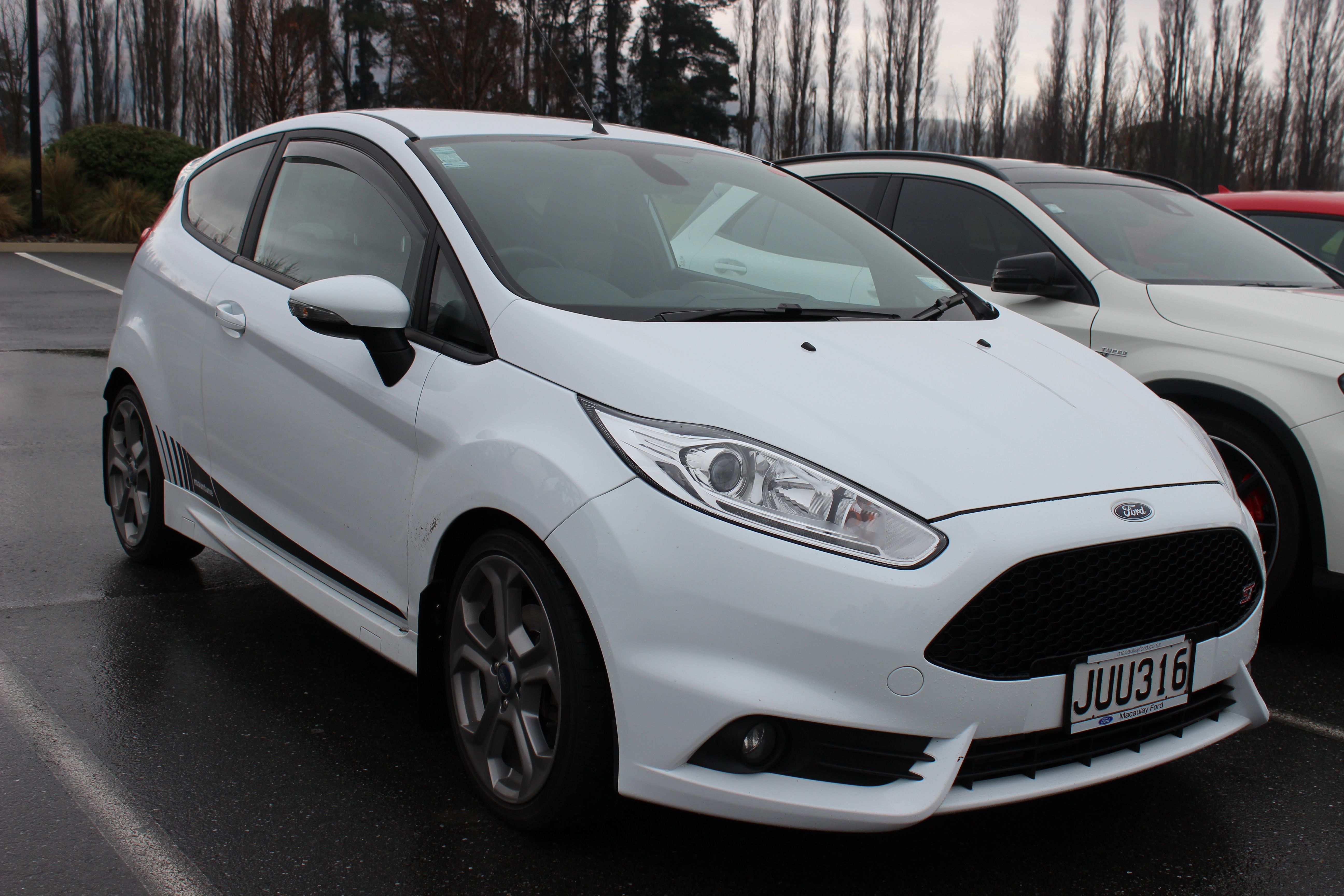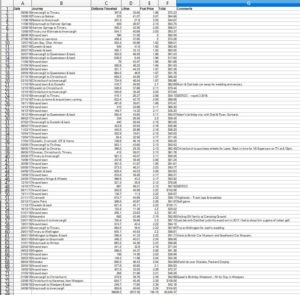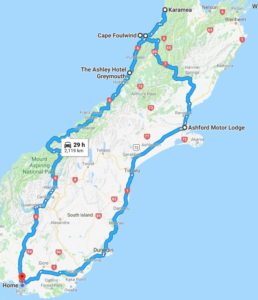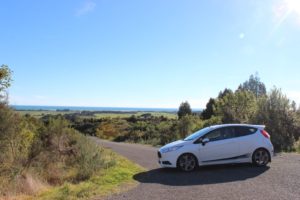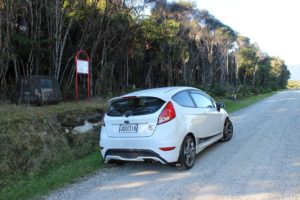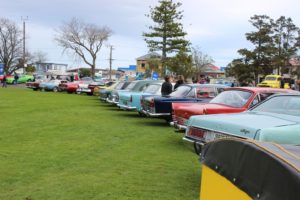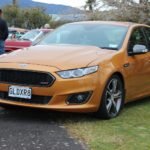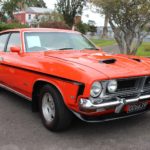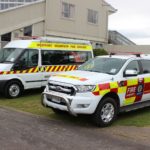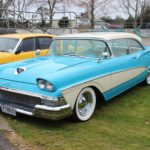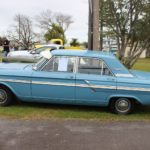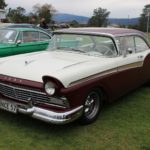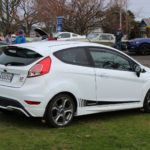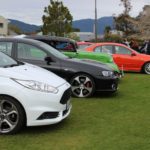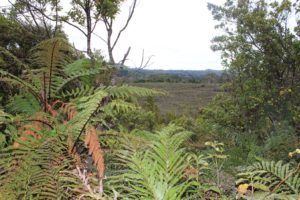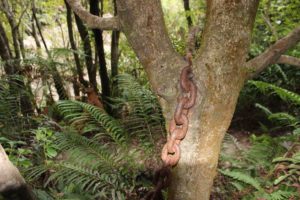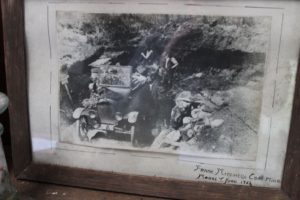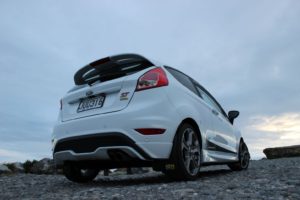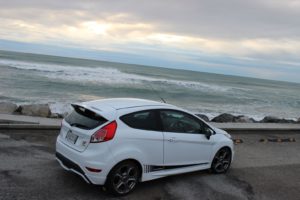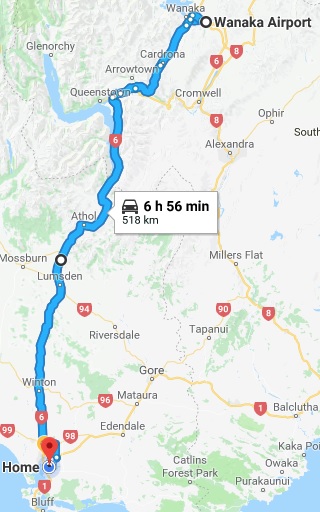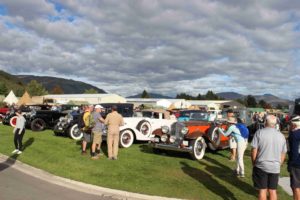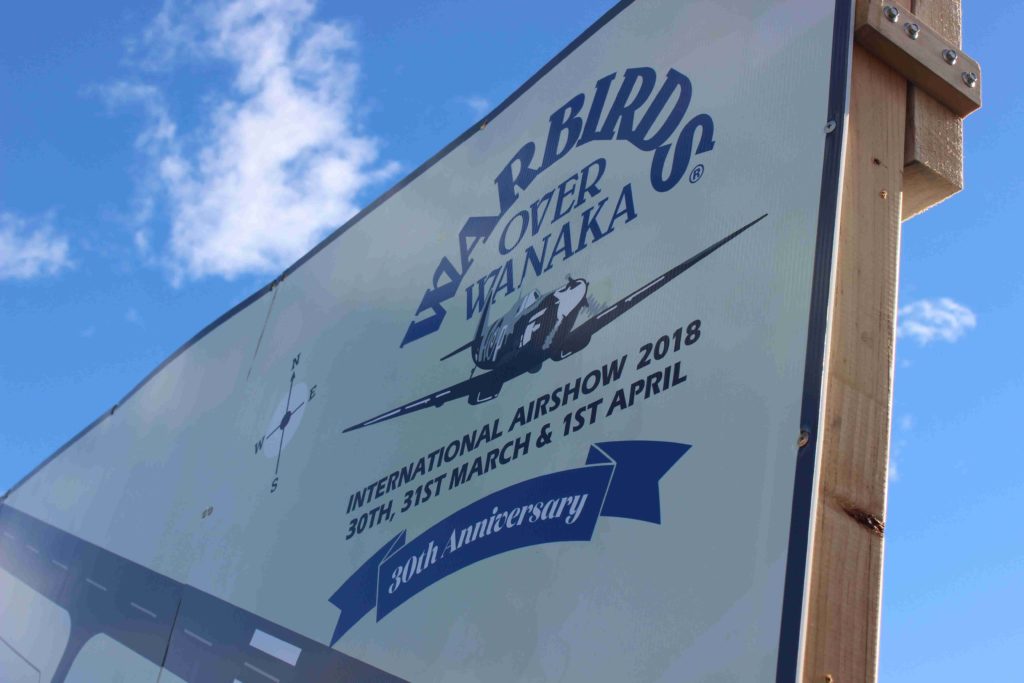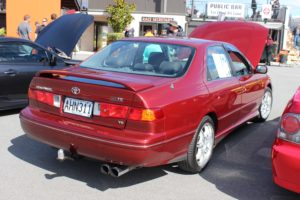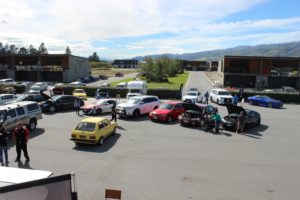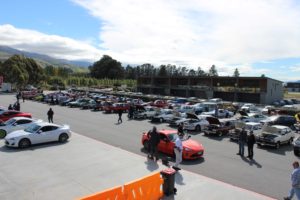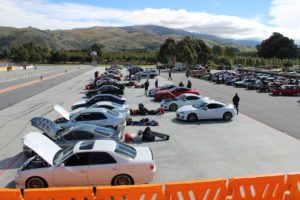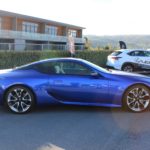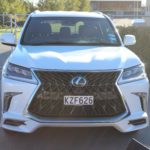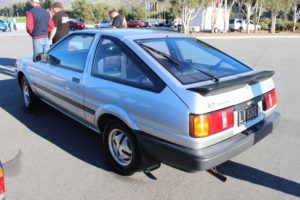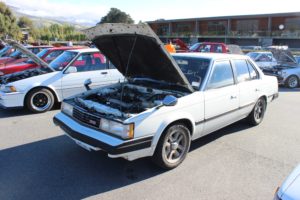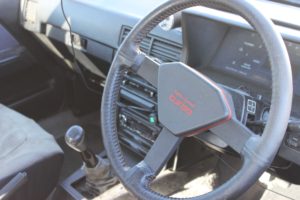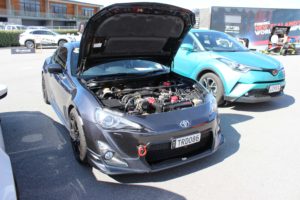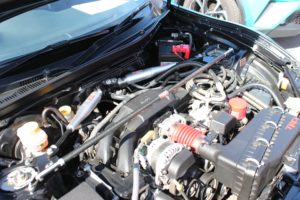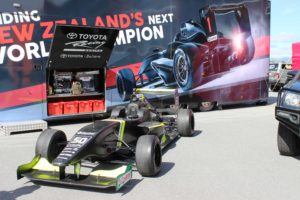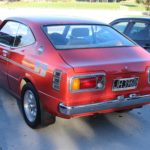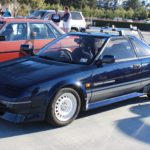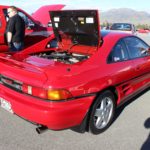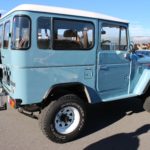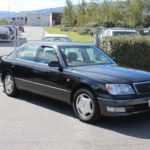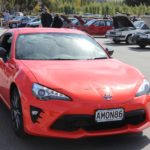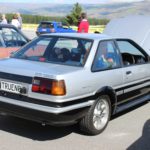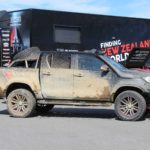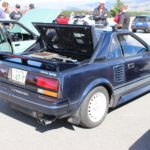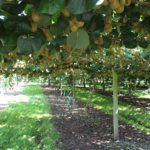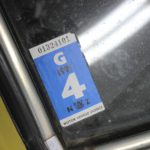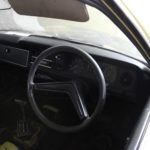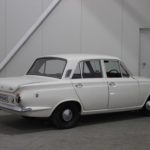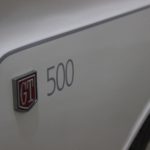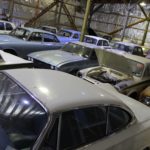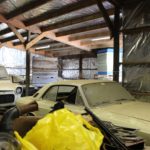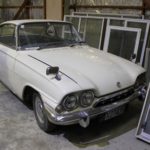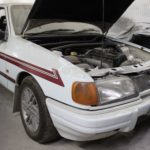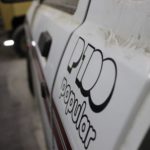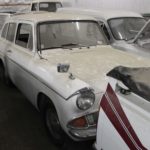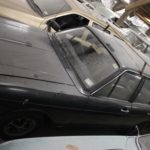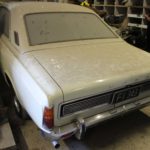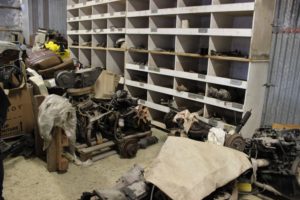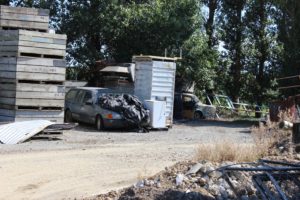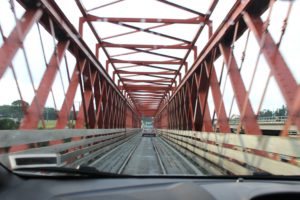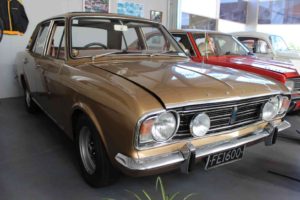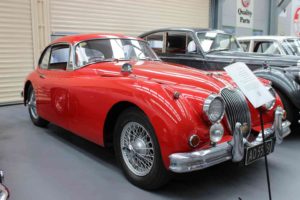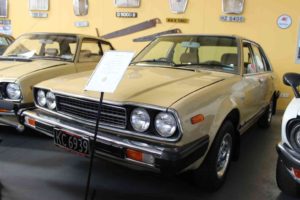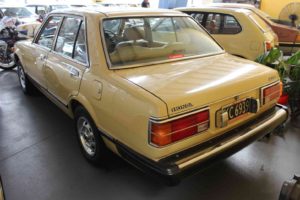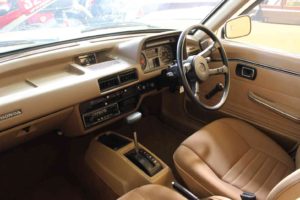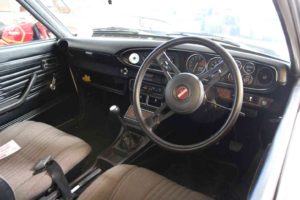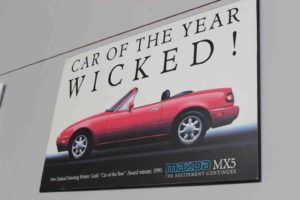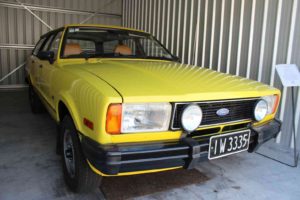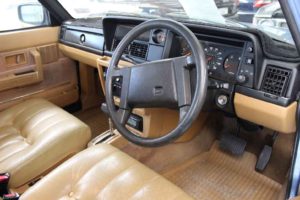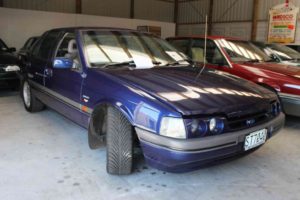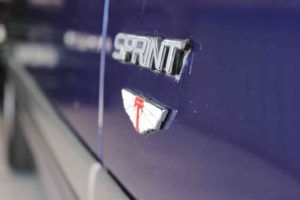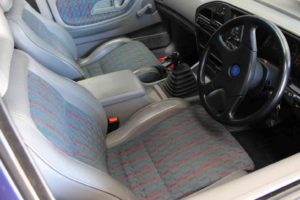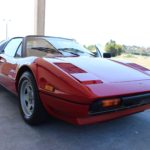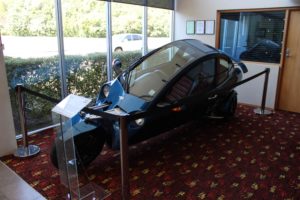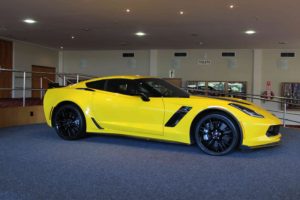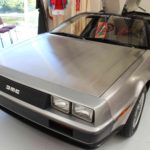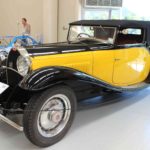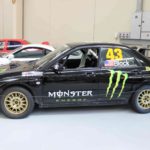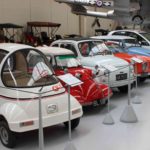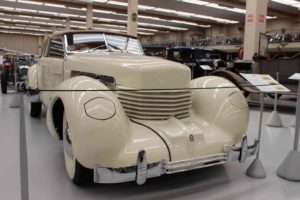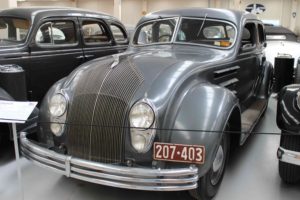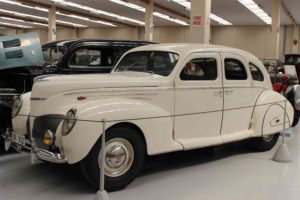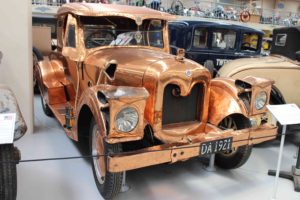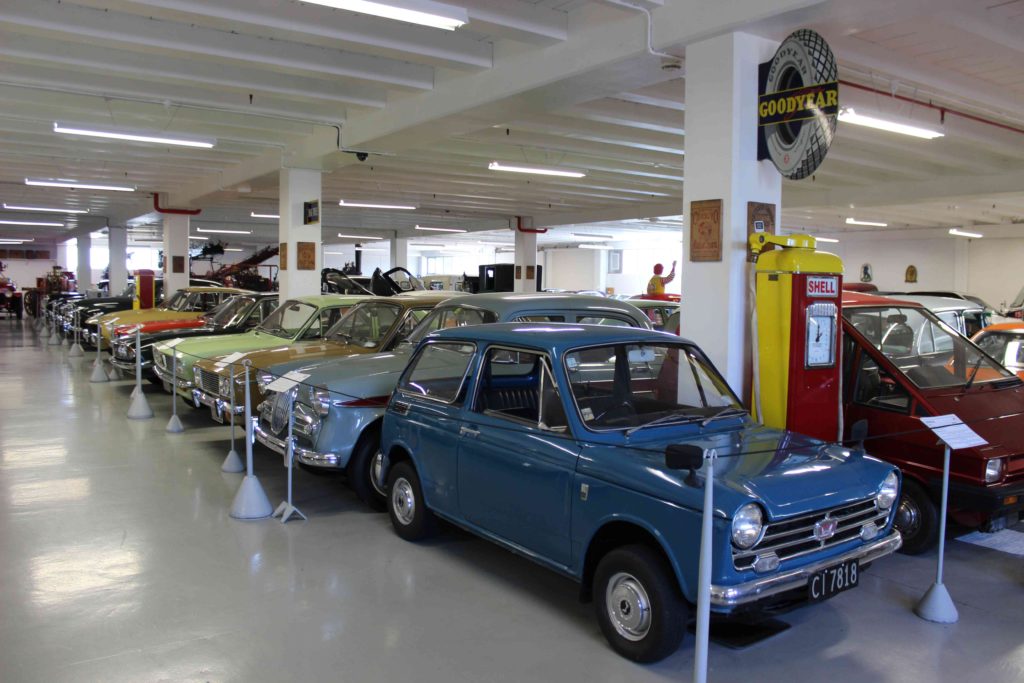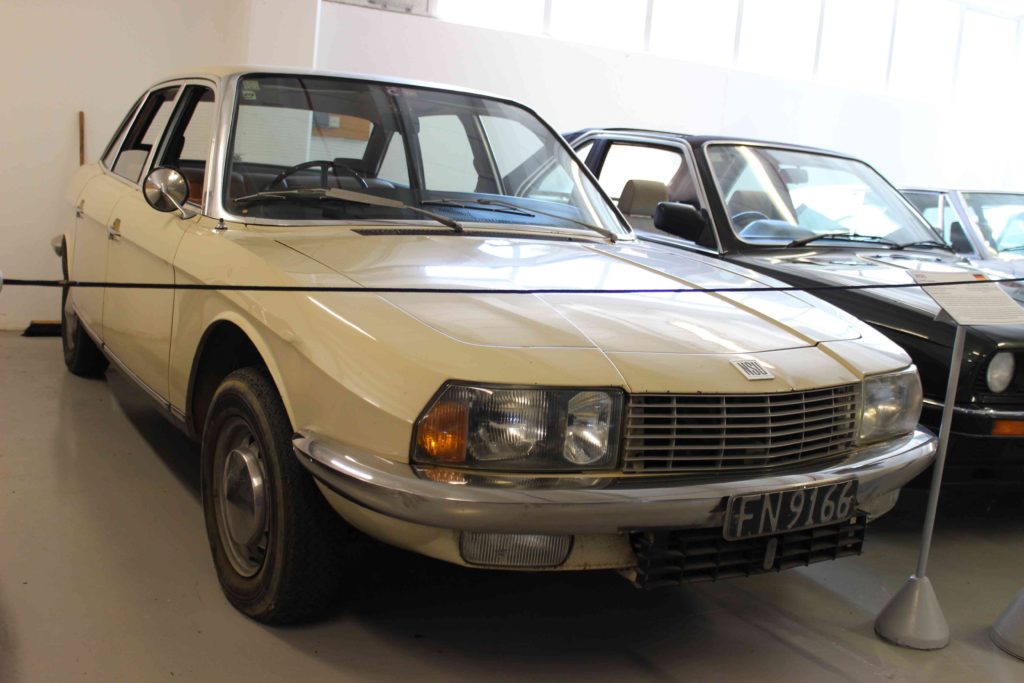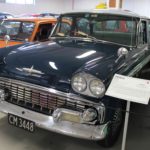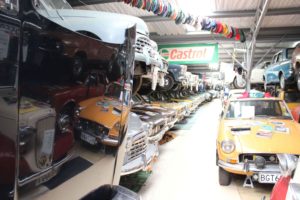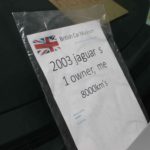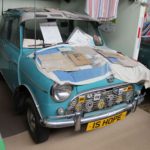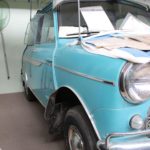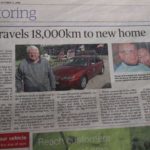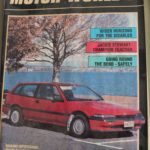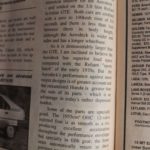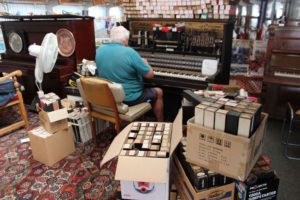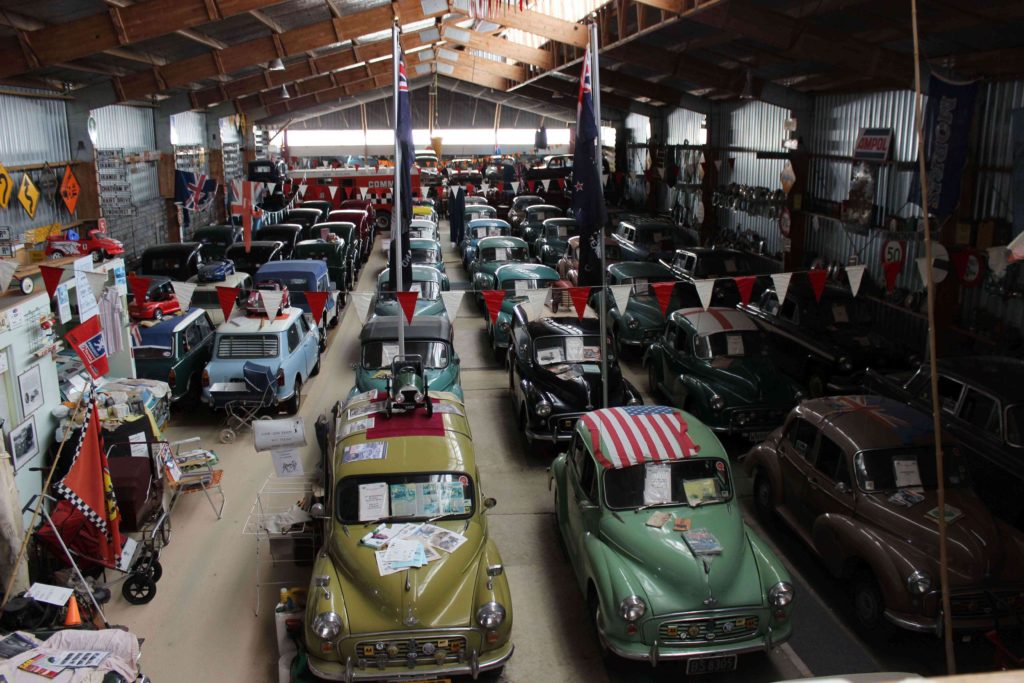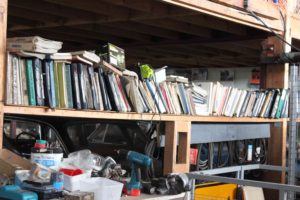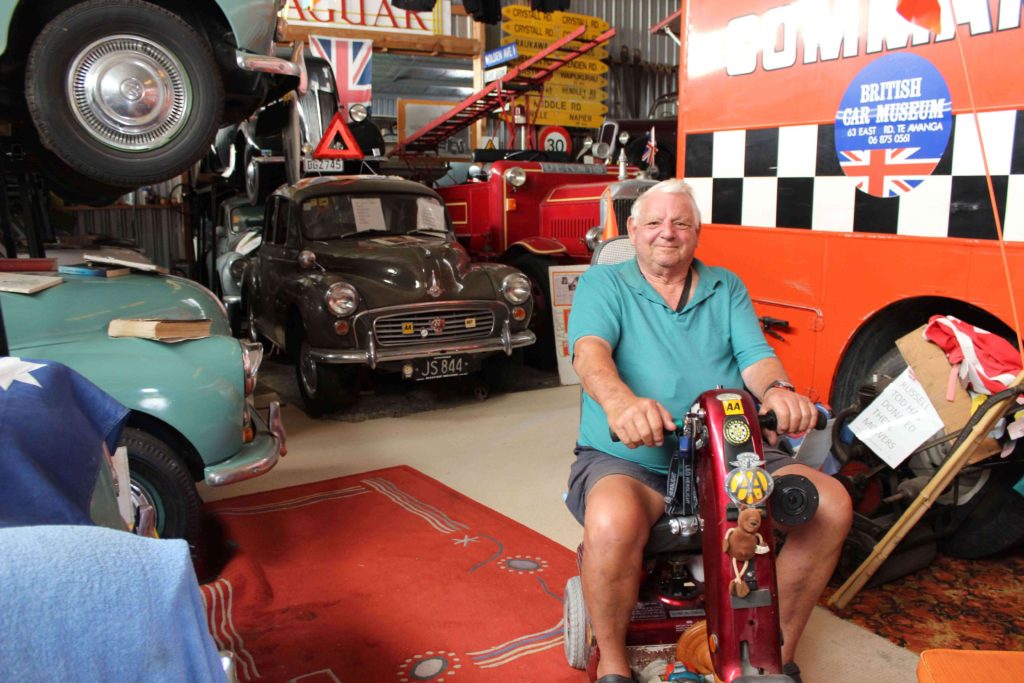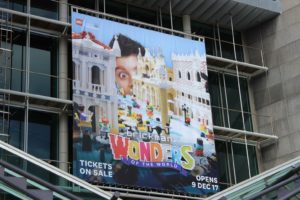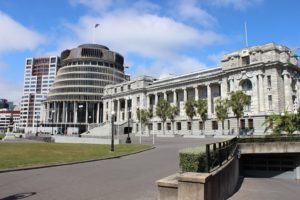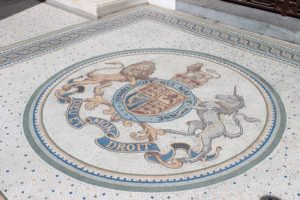Quick trip – Highlands Breakfast June 2018
Being the third Sunday of the month, the monthly Highlands Tracklaps Breakfast was on again. After a long week at work, what better way to de-stress than a trip away to cut a few laps of the Highlands Motorsport Park in Cromwell in the early hours of a Sunday morning.
Leaving home in the chilly 3 degree weather around 6am, Dad and I hit the road. I washed the car yesterday, so she was pretty clean leaving town – but driving on wet roads, especially ones that have had cows crossing between paddocks meant that the car turned up looking less than stellar.
Arriving at Highlands around 8.40am, we were the first ones in the carpark and the office wasn’t even open. Guess we made pretty good time with the lack of traffic on the roads at that time of day!
Unlike previous events, it was a pretty small event today, with only about ten cars in attendance. This could have been due to the weather, you can see the dew drops hanging off the tree branches and the fog hanging around the mountains.
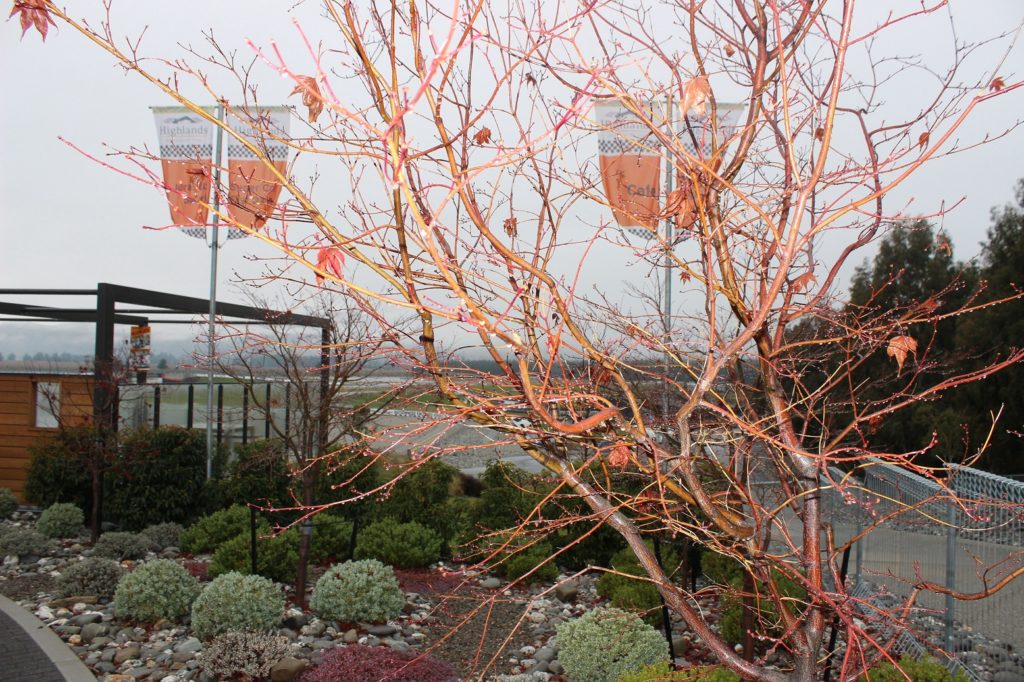
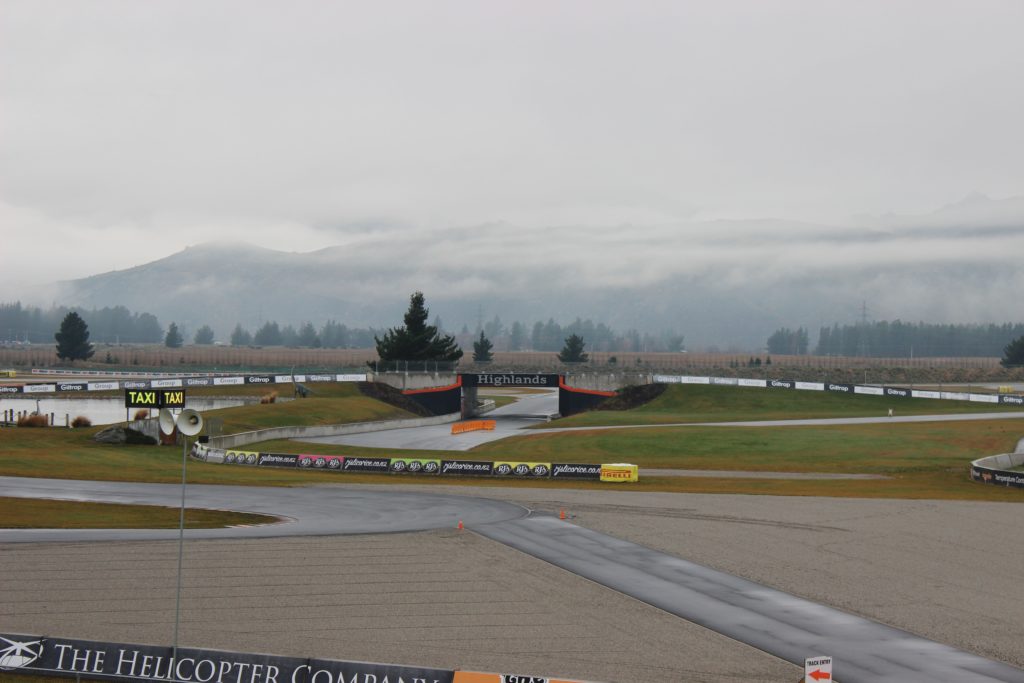
The driver briefing was at 9.20am inside the reception area, before we headed out on track to follow their Fastlaps Taxi – the Porsche Cayenne. In the conditions, the track had quite a bit of standing water, so we were a little limited in how hard we could push our spirited drive – but had a good time none-the-less.
I know I said I’d do video of the event this time, but I’ll be better prepared when we head up again in August for Rob’s birthday. I’ll have to practice my go-kart stills then, so that I can take a win this time.
Instead, here’s a small handful of photos of some of the other cars in attendance:
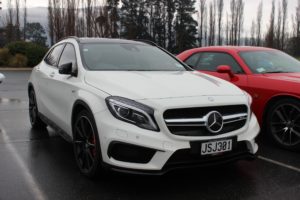
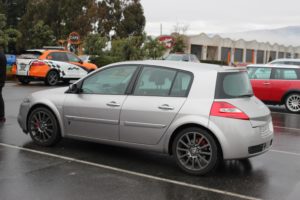

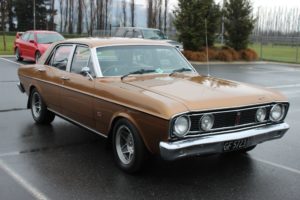
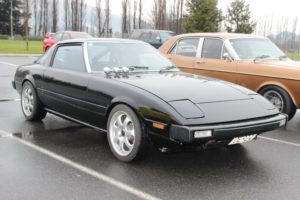
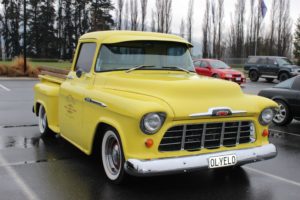
We then headed and sat inside the cafe for our breakfast burger, filled with sausages, eggs, bacon, hashbrowns and some salad. A good way to warm up in the middle of winter.
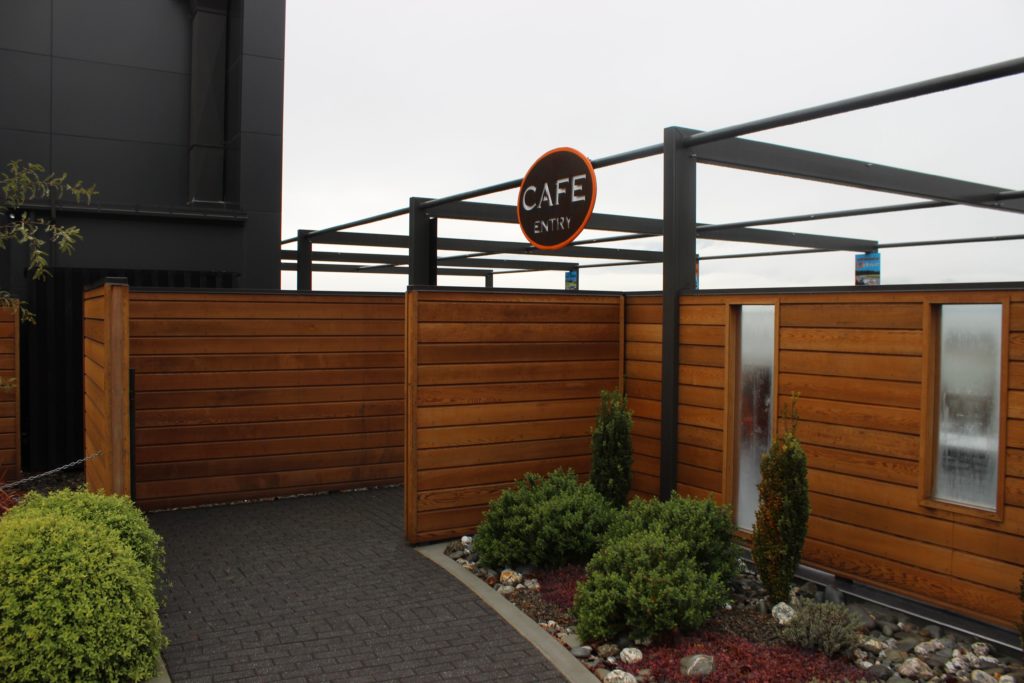
I have another post in the works, detailing some maintenance work that I’ve been doing on the Capri. I’ll spend next weekend performing an oil change on the car in preparation for a 1200 kilometer return trip to Christchurch the following weekend, plus do any further checks just to make sure it’ll manage the trip okay. Stay tuned!
Fiesta ST – 2 year ownership
The past week was the two year anniversary of my 2016 frozen white Fiesta ST.
So, I hear you ask, how’s the car going and do I have any regrets? The car is going really well and is truly a pleasure to own. Not once has the car broken down or left me stranded, I haven’t even had a flat tyre during the 38,000 kilometers that I’ve travelled.
Aside from three general services, which I’m having done every 15,000 kilometers, the only other servicing has been me rotating the tyres every few thousand ks to try and get even wear. The first service was a complimentary check service, with the next two costing $245.70 & $255.42, totalling $500.92.
The other costs have all been voluntary and include:
* Front and rear Mountune mudflaps ($411.18)
* Mountune side decals ($206.76)
* Weathertech monsoon guards ($261.99)
* Mountune short shifter kit ($279.14)
* Rear window tints ($100)
Total: $1,259.07
Originally, I had ordered a set of monsoon guards for the front windows, but the dealership couldn’t manage to source any for the two door variant of the car. I managed to purchase my set out of France, that I then have to have shipped to the UK, before having them forwarded to New Zealand. With Invercargill being the “City of Water and Light”, we get quite a bit of rain and it’s great to be able to have my window cracked open an inch or two without water coming and to let in a bit of air so that the car doesn’t fog up too much.
Carrying on with the sheer amount of rain we get here, the mudflaps were also a bit of a must and do also provide good protection to the paintwork. The same goes for the side graphics, as they do help protect the lower parts of the door from road rash. Ideally, I’d love to have some kind of paint protection film on the car – but I just can’t justify the cost.
The tints should hopefully save the rear of the driver seats and rear seats from those harmful UV rays and also mean that if I leave any gear in the car, such as my work laptop or camera – it’s not totally visible to passerbys.
What are the future plans for the car? A fresh set of tyres will be due, as I don’t believe they’ll do much more than 40,000ks. I’ve done some research and I’m going to put Bridgestone Potenzas on the car again, but put the RE003 Adrenalins on instead of RE050As that I’m currently running. The RE003s are supposed to have superior grip in the wet, which has been my only complaint with the current tyres. Plus, I noticed while washing the car that after two years, I’ve finally curbed one of my rims – so I’ll likely get them refurbished in a lighter silver when I go to put the tyres on. Other than that, it’ll just get driven.
Because I like to keep track of fuel, the above shot shows that I’ve stopped a total of 74 times for fuel and pumped 2672 litres at a cost of $5,648. The last couple of fuel stops have been the most expensive as fuel has increased to $2.39/l for premium.
I’ve posted a video of the ST getting a quick wash & then a walkaround of the car after two years. Check it out:
Hope everyone is having a great weekend!
Westport – All Ford Day 2018
The start of June brings our last long weekend through until October, so what better excuse than to make it an extra long one by taking the Friday off and making it into a four day event. In 2016 & 2017, I spent Queen’s Birthday weekend attending the Timaru All British Day. With my two year anniversary of the Fiesta, I decided it was a good weekend to take it to an event where it’d be welcomed to attend – Buller All Ford Day.
I started Friday morning by getting out and washing the car in the dark at 6am, where we had a -4 degree celsius day. It’s not something I’d volunteer to do again, my hands were like blocks of ice and the water was freezing on the car. Still, I couldn’t go away with a filthy car!
Travel for Friday was pretty easy and we only had to travel as far as the Ashford Motor Lodge, in Christchurch, where we were booked in for the night.
With a reasonably prompt start on the Saturday morning, we ventured over the Lewis Pass and headed to our midday destination – Karamea. I’ve only driven the road into Karamea once before, when I originally purchased the ST, but have been dying to drive it again ever since. The second time around was just as rewarding, although next time I do this road it has to be in the summer when I don’t have to be quite as gentle with the car on some of the damp and slippery road surfaces.
The sun was out and shining in Karamea, in fact the entire four day weekend mostly consisted of t-shirt wearing conditions, which is a change from our ten degree days we’ve been having in Southland. With plenty of spare time, we got to explore some of the hidden areas of Karamea, including the original school site in the second picture above. The original school was formed in the mid 1870s, but didn’t stay in this location for long – as poor soil forced the settlers down to the river valley. It was eerie visiting the old school location and surrounding areas, as it really felt like that place that if you went missing – you’d never be found… I also had a chuckle at the lack of effort put into the telephone/internet cables in this remote location. As you can see in the second picture – it just runs along the roadside and at one stage, you actually drive over the cable!
Sunday brought the main event for the weekend, the car show. It’s about 105 kilometers through to Westport, which takes around an hour and a half, as the roads are quite tight and twisty in sections. Making reasonable time, we arrive for the 10am starting time.
The venue, in the middle of Westport was a really good one for a car show. With a grass field in the middle for you to park on, you could walk the entirety of the outside on a banked tar-sealed loop. Plus, there was a large grandstand over by the stalls – a good place for a sit-down or to shelter from the rain if the weather hadn’t played ball.
We caught up with Richard, who had brought his XR4i to the show. It was great to hear how some of the projects he had underway when we visited in February were progressing.
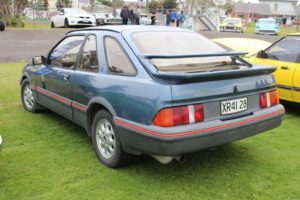
My car of the show was this AU XR8 Falcon. The owner had the car presented extremely well in original condition. Take a look at the stone chips on the front bumper – proof that the car has been well used.
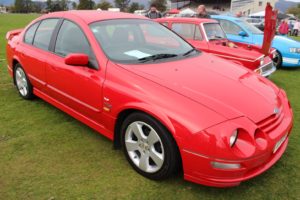

After the show, we decided to do a little exploring, which included a stop at the aptly named “Foulwind”…

It was a nice little coastal town, that had a few little holiday houses and bed & breakfasts.
The next stop was Mitchell’s Gully Goldmine, which, surprisingly is still owned by Valentine Mitchell – the great (or great-great) grandson of the original owner. Paying the $10 entry fee, we set off on our adventure through the mine.
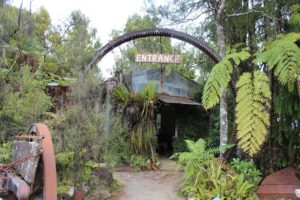
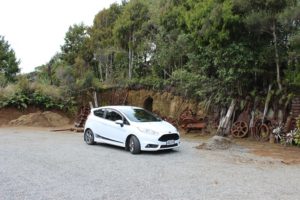
Aside from the track that has been cut out for the public to follow, the mine looks almost exactly as it would have when it was being actively mined in the 1860s.

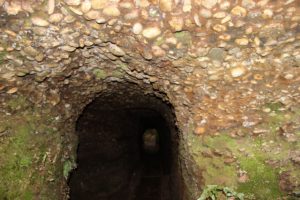

With a tourist based venture like this, I was surprised about the lack of health and safety. No mention of good shoes or a torch were mentioned, so I was pleased that I carry a penlight in my pocket, otherwise it would have been a little awkward in some of the tunnels. As you can see in the pictures there are no internal supports on any of those tunnels, they’re just 150 year old tunnels dug out of the dirt and stones.
This is the last remaining waterwheel left in the whole of the Charleston area and powers the stamping battery situated beside it. The stamping battery crushes the material put into it, as it rotates the camshaft. The owner appeared while we were looking at it and told us that it’s the third waterwheel on this exact spot, which he had built himself in the 70s.
The whole Charleston area is actually an ancient beach and at some spots, you can see the layers and layers of sand from hundreds of years. The sand is cemented with iron, so the material is broken down using the stamper and the gold extracted using materials such as mercury baths.
The scenery on the 40-odd minute walk through the tunnels and area was pretty cool, including this old chain that the owner had left sitting on this tree in the 70s and had never picked up again.
In the office were a bunch of old photos, memorabilia and newspaper articles from the late 1800s. As you can see in the pictures, Valentine’s grandfather was using his Ford Model T in 1921 at the mine. The Charleston map from approximately 1870 shows just how busy the town was – gold miners from all over the world arrived to make their living. Valentine said that he believes New Zealand is the melting pot of the world, with most of us having ancestors from many different countries.
Driving the remaining distance back into Greymouth, I managed to park the ST up and take a few “beauty” shots.
Monday morning consisted of the 700 kilometer journey back home, with the car even making it home on a single tank of gas. It was another good trip away in the car and a great way to celebrate my first two years with the car.
I’ve got another post underway covering my ownership costs so far and a video to go with it. Stayed tuned!
Packard Car Display – Warbirds Over Wanaka 2018
Easter weekend in Wanaka is one of the biggest that they experience, with the bi-annual ‘Warbirds Over Wanaka’ event. It’s the biggest airshow in the South Island and features three full days of ground and air events, culminating in a great event for air enthusiasts.
I left on the Friday morning, as I was more interested in seeing one of their ground displays – the Packard Car Display. Entry for Friday was cheaper ($60), compared to either the Saturday and Sunday when the airshow would be in full flight, pardon the pun. The Packard Car Display is like nothing we’re ever likely to see back in New Zealand again, as out of the approximately 50 cars, there were 10 that had been brought over from the United States.
As I went from car to car, here are a few of the places that the cars had travelled from:
– Auckland, Hamilton, Cambridge, Whangarei, Lower Hutt, Nelson, Motueka, Queenstown & Wanaka.
– Gold Coast.
– Colorado, Massachusetts, Maryland, Michigan, New York & Washington State.
This display was orgnaised by the Packard Car Club of New Zealand and you could tell that they had managed to source a large number of cars from the same marque, owned by an enthusiast bunch of owners. I was surprised at how many owners had signs up with the classic Packard selling line that originated back in 1900 at the New York Auto Show – “Ask the man that owns one”. A motto they were still truly supporting as they each happily discussed their cars with interested spectators.
One such example was my conversation with the owner of this 1956 Packard Caribbean Convertible. In 1955, Packards were fitted with new torsion-level suspension. Basically, it means that if you hit a bump, the force is transmitted to the opposite wheel – reducing the stress put through the frame of the car. The owner said that it means for such an old car, it has great road handling ability. He was also keen to point out that there are electric motors in the back that adjust the rear torsion bars depending on the passengers or load that you carry, leveling the car out so that it always sits at the same height. Pretty cool stuff for 1956!
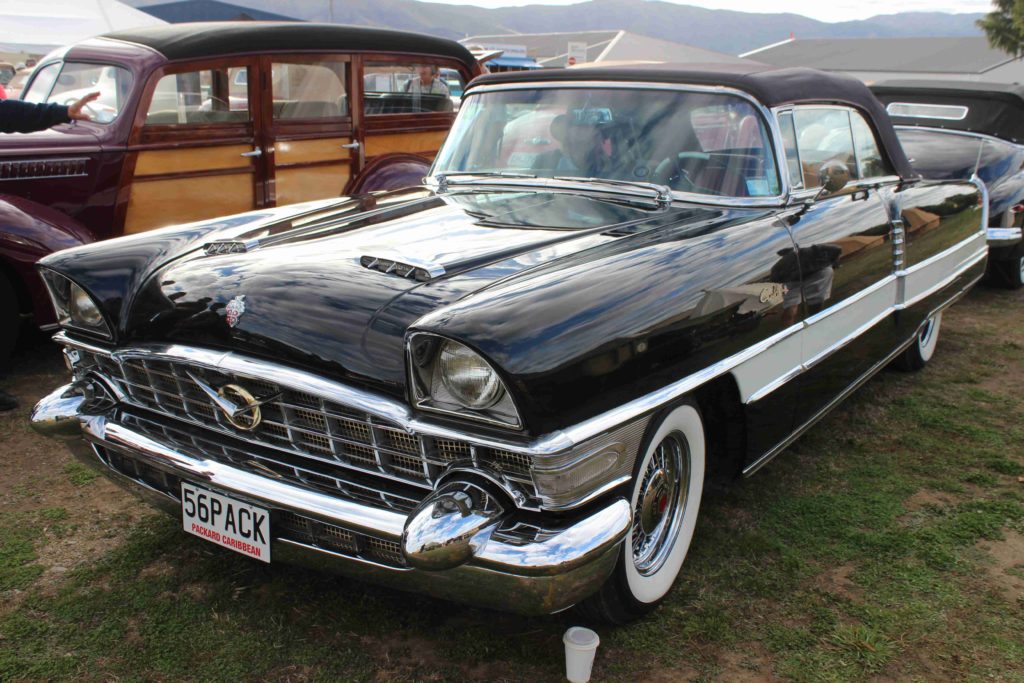
Being a company that produced luxury cars, I wasn’t surprised to see this 1930 Packard featuring a hidden compartment in the rear for the chauffeured passengers to enjoy a little tipple as they were driven to their destination.


The following 1936 Packard Twelve featured a funny sign at the front stating – “If you get into a flap over fuel prices, then this is not the car for you.” The owners would need to take that approach with this car, as it features a 7.75 litre V12, producing an amazing 175bhp. In 1936, this must have been a seriously quick car – even today it’s generously powered compared to a number of cars on the road.
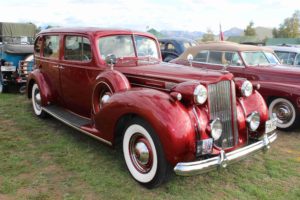
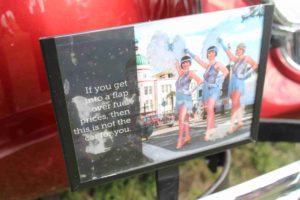
We’ve all heard of the famous pilot Amelia Earhart? Known for breaking a number records, she disappeared while attempting to circumnavigate the globe in 1937, over the Pacific Ocean. She’s been back in the news recently, with headlines stating that they’ve found bones on an island called Nikumaroro and believe they could belong to her. Aside from making a good headline and attracting traffic, it’s unlikely these stories are true. Even though Amelia and her navigator were in the general area, it’s unlikely they would have had anywhere near enough fuel to reach the island.
At the time Amelia disappeared, she was a spokeswoman for Packard and owned the following 1935 Packard Super Eight 3 window coupe. After she disappeared, her husband held onto the car for two years, hoping she’d return, before moving the car on.
The car is now owned by Ross & Robyn from Queensland, Australia. Most of the restoration work has been carried out in Sydney and Queensland and the car has since then won both National and State events in Australia.
Still adorning the original license plates, the car is something worth seeing:

Here are a few of the other Packards that were on display:
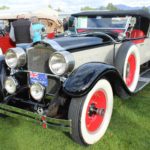
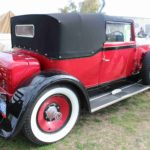

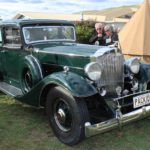
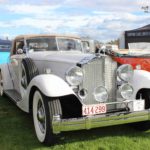

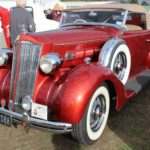
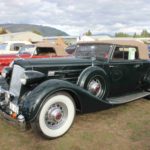
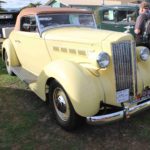
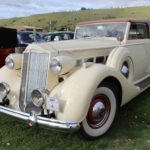
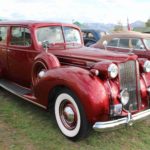
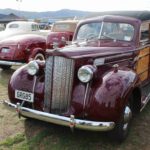
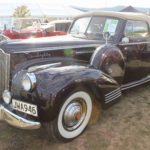
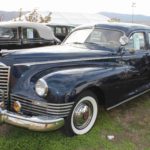

In attendance, were a number of vehicles from other manufacturers. One interesting car was the following 1936 Chrysler Airstream. It would have been a car that competed against the luxury Packard brand back in the 1930s.

Appearances from brands such as Buick, Auburn, Ford, Cadillac, Lincoln, Cord & Railton made some good viewing too.

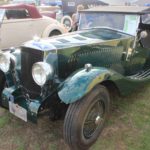
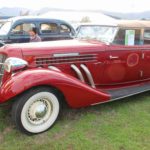
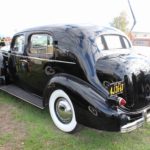
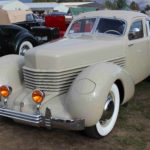
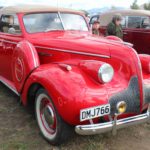


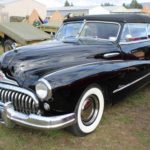
It’s the first time I’ve spotted imported cars sporting their original plates, which are their genuine registration plates. I’m not sure how these owners get on, as typically, unless the plate is a NZ-approved plate, you’re not supposed to run them on the car. They’ve obviously paid for personalised plates & then just left the original ones on the car. I love the idea!


From here, I wandered around the rest of the airfield, checking out the ground displays and looking at some of the aircraft that were flying in, out & performing stunts in the air. Stopping for a bite to eat, I had some KFC (Korean Fried Chicken).
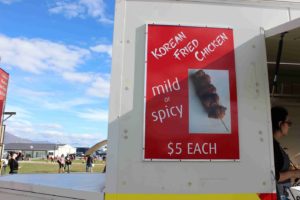
The new Kia Stinger GT was on display and was looking menacing in white. Need to get myself a drive of this new car.
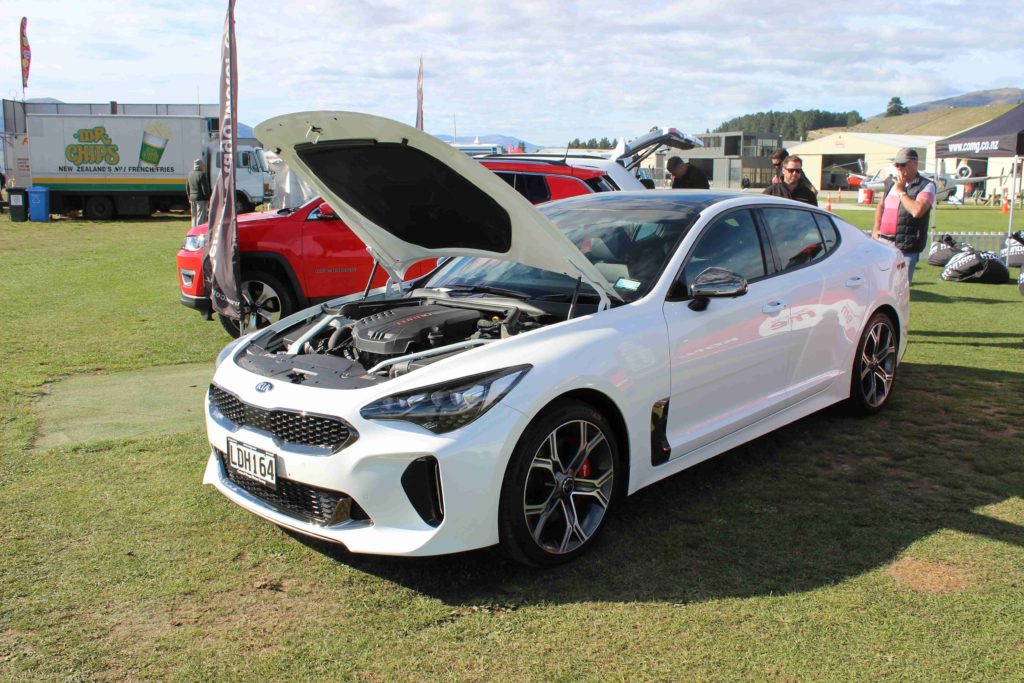
With lunch completed and having looked over everything of interest, I had an enjoyable drive in the ST back to Invercargill.
Toyota Festival 2018
On Saturday 24th March, we left before the crack of dawn to head to the 2018 Toyota Festival. The small convoy consisted of Rob and I (in Rob’s Corolla GT-i), Nathan and Colin (in Nathan’s GT Liftback), and Karen, Kady and Reuben (in Nathan’s TRD Camry).

Arriving at Highlands Motorsport Park just before 9am, we parked each of the cars in their respective decades, ready for the show and shine. The morning started out on the chilly side, but it soon warmed up and we all needed hats and sunglasses on.
Colin and I started with a decent look over some of the new cars that were on display. The Lexus LX450D (the large 4×4), was priced at a whopping $179,000! Neither Colin or I thought we’d buy a car from the salesman after we overheard him telling someone else how well they went as he “thrashed” them around the Gorge on the way to here…
We’ll then move on to a couple of my picks of the day, starting with this 1984 Toyota Corolla AE86. Running a 4A-GE blue top, this car was completely 100% original. The car had only one owner, who purchased the car brand new for $25,210.50 in 1984 at Wrightcars Gore. Aside from a teeny bit of rust that was starting around the sunroof, this car was in spectacular condition, considering the car has travelled an impressive 361,000 kilometers! I believe the owner has plans to rebuild the gearbox & repaint the car – but I think I’d only be addressing the slightly rusty sunroof & leaving as much of the original paint on the car as possible.
The other car that I drooled over was this 1984 Toyota Corona GT-TR. Running the 1800 3T-GTE engine, featuring a twin-cam head and turbo, which produced close to 160bhp. The claim to fame with this engine is that it was the first ever twin-cam turbo charged engine to be produced in Japan.
Dad drove a 2-door Corona for many years, which featured the same engine and I can recall many trips we took in the car.
To even things up, the following 2012 Toyota TRD 86 was my modern pick of the show. Number 4 of 9 built and the only GT spec manual, makes this car a pretty special “factory” car. This car has obviously had some TRD extras added, which add up to be 29 modifications over the standard Toyota 86. Some of these are:
* 18″ Forged Wheels.
* Quad Exhaust.
* Brembo Brakes.
* Carbon fender fins.
* Stabliser (sway bar) set & chassis rigidity kit – when you look at this stuff in the engine bay, it’s pretty impressive.
Toyota had setup a simulator for their FT-50 racecar (pictured below), which allowed you to drive a simulated version of their car around the Highlands track. The car had bags of power & you had to be pretty gentle on the throttle, otherwise you’d spin the car pretty quickly. I managed to get a 1.58 in my three allocated laps, which didn’t quite compete with the highscores of the day (I think someone had knocked out a 1.42!).
Throughout the course of the day, there were four “track” groups, that were cutting laps of the track. If you had signed up to the track events when registering, you were able to take part in these events. Most of the cars in these groups though, were close to racecar spec. We spectated a few of them getting out and putting in decent times.

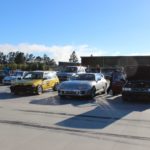
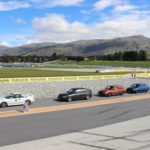
We stopped & had some burgers cooked by the local Lions club for lunch, before waiting for the show & shine prizegiving in the afternoon. The prizegiving was held & just about all of the owners had stayed around for the event. Nathan was delighted to take home an award for the 2000-2009 category with his very rare 1 of 10 built by Toyota NZ, Supercharged Camry. Well done Nathan!
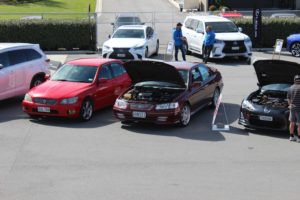
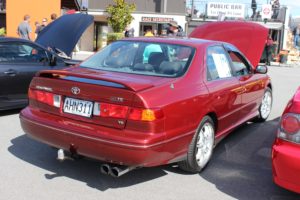

The final spectacle of the day, was a group photo of all attendees lined up on track. Colin and I jumped into the liftback and did a lap of the track to get to the starting line. We parked behind Rob in his GT-i, who had a blast flicking his car around the track.

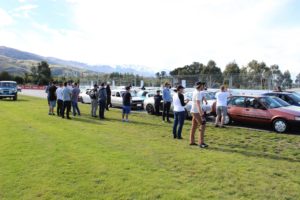
I managed to sneak a couple of shots while hanging out of the car window, while Colin drove:

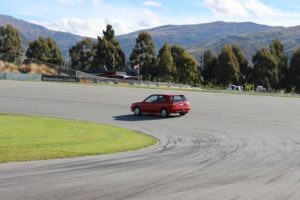
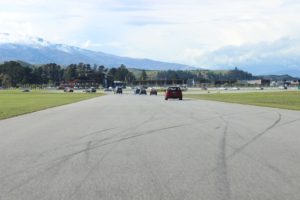
Once the organisers had taken the large group photo out of the cherry-picker, we all jumped back into the cars and did another lap around the track before leaving. I got the honours of steering Nathan’s liftback around the track & had a blast, especially with the raspy exhaust note that thing makes!
After a quick stop in Alexandra for an ice cream, I took the wheel of Rob’s GT-i for the remainder of the trip home, which included a stop at the “chippie” in Gore. It was a great day hanging out with a great bunch of people, seeing some rare, interesting and wacky cars.
Richard’s Ford Collection
Following on from the visit to Omaka Classic Cars, the Fiesta was back on the road, venturing from Omaka through to Motueka. It’s a very scenic drive in this region of the South Island, as it’s all wine growing country. Not to mention the twisty roads!
Arriving at Richards house (and work), we introduced ourselves to him and had a decent chat. When you meet a passionate enthusiast like Richard, it’s such a great experience. Dad had read a magazine article about a car out of Richard’s collection a few years ago and looked him up online the week before we left, asking if we’d be able to call past for a visit. Richard didn’t even hesitate and welcomed us with open arms.
Treating us like we were old friends, he first showed us around his place. By day, Richard is a kiwifruit grower and farms export-grade kiwifruit that get sold overseas. He and a few of his employees were busy with a digger, preparing for a drainage guy that was coming the next day – as he’s just added on another sorting shed.
The first shed Richard took us into contained an ultra-rare Mk3 Crayford Cortina. I’ve only ever seen a Crayford Cortina in a magazine article before and didn’t even know there was one in the country. Crayford were a UK based aftermarket tuning company that you could have your new Ford shipped to and they’d make their tasteful modifications to. Being an expensive option to have done to your Cortina, there wasn’t a large number produced, thus, making the car so very rare.
The car currently sits half-stripped, as there is a small amount of rust in the passenger floorpan that he’s going to get tidied up. With Richard’s work ethic and enthusiasm, I bet that he’ll have this car back to factory condition and on the road before the end of the year.
The next shed isn’t so much a shed as it is chilled storage. He’ll have to move these cars out of here before the shed is packed with ripe Kiwifruit.
The four door Mk1 Cortina was purchased by Richard in Australia for when he and his wife visited, as they were sick of hiring rental cars. Fast forward 15 years and with the addition of 60,000 miles, he’s shipped the car home and had it repainted.
His other project in this shed is a Mk1 2-door replica of the car that won the 1965 Armstrong 500 at the Mount Panorama Circuit (Bathurst). It’ll make an interesting conversation piece at future car shows and in public as it’s a big piece of motoring history in this section of the world.
Here’s a few interior shots of the cars stacked in the sheds. An amazing sight!
Moving on to his main storage shed, we were presented with a car that we have in our collection – a XR4i Sierra! The guy has taste. I’m pretty sure Richard knew we were proper Ford fans once we mentioned we have one. Like our car, his was in a genuine original condition. Parked closest to the exit and registered and warranted, it shows that he’s been using the car.
Next up was a white 315 Consul. The last time I spotted a 315 Consul was back in 2006 during a Vero Car Rally that was held in Invercargill. The middle shot is a Mk5 Cortina Ute, from South Africa. I’ve never seen one in person before and doubt that there’s that many of them in the country. The third car pictured below is a Mk1 GT Cortina, a rather expensive and extremely desirable car.
The next car that caught my eye was this Sierra Ute (or pickup). The P100 was built by Ford in South Africa. The Sierra-based Ute was originally available with either a 2.0L Pinto motor, like I have in my Capri, or a 1.8L turbo diesel Endura-D engine.
Next up, we have an assortment of station wagons. Again, cars that I’ve seen in books or photos, but never in person – let alone in one single collection.
In another shed off to the side is an assortment of spare parts, as well as this Ford 20M. Built in the late 60s/early 70s, the 20M was a submodel of the Ford P7, built by Ford Germany. The 20M featured a 2.5L Essex V6 motor and was rear wheel drive. The car pictured below is a South African 20M, as it’s right-hand drive.
Having a number of classic Fords also requires a diverse collection of spare parts.
The thing that I appreciate the most about Richard’s collection is the fact that just about every car he has in his collection is completely original. They haven’t been chopped, modified or hacked apart. Aside from a few requiring a good wash, the collection was in superb condition. I can’t thank Richard enough for his hospitality and dedication to a single marque, it’s a collection of cars that I’ll be unlikely to ever forget.
From Moteuka, we had another tight and twisty road down to Greymouth, where we stayed in our usual digs – the Ashley Hotel.
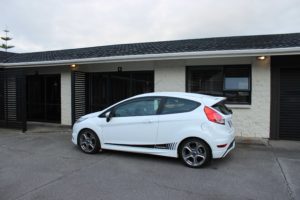
The following day we made our way home, to Invercargill, racing the incoming storm – which ended up stranding tourists the following day as roads were closed.
Another great adventure had in the Fiesta, which ran like clockwork for the entire trip.
Visiting Omaka Classic Cars
I know that I’m a few weeks behind with this post (and the next couple), but better late than never, right?
Leaving Wellington, the Fiesta was loaded onto the Ferry and we travelled back to Picton, where we were straight on the road down to Omaka.
Once arriving in Omaka, we stopped into the Omaka Classic Cars collection. Composed over over 100 vehicles, the museum features cars from the 1950s right through to a late model Jaguar. All the vehicles in the collection were in superb shape and the owners claim that with very minor work each and every vehicle would happily drive the length of New Zealand without issues.
The main part of the collection is housed in a massive shed with plenty of natural light, so you get optimal viewing experiences on some of the amazing vehicles housed in this collection.
Let’s start with a car that I own, maybe not quite this spec – but close enough! A Mk2 Cortina 1600E, with the E representing “Executive” trim – including that gorgeous wood paneling. This car also included the black vinyl webasto (folding) roof. The roof would be great for a hot summer’s day in this wine-growing region!
The next car that I spent time drooling over was this red Jaguar XK150. Wire wheels, that old-leather smelling interior and the little shifter make this another car that I’d love to add to my collection. I really must by a lottery ticket this weekend, haha! This car was originally purchased by the manager of a Tea Plantation in Malaysia, before he shipped it to the USA when he retired. In 1995 it was eventually imported to New Zealand.
We then move on to this super-clean first generation Honda Accord. With just 87,000 kilometers on the odometer, the exterior and interior condition was in tip-top condition. It almost looked like it factory fresh. I’d suspect that this was a local car (assembled in the Nelson Assembly Plant), that’s spent it’s life in the Nelson region.
The final feature car of the main shed was this little Datsun 160J SSS. A 1974 car, this SSS was in great shape. These have become such a rare commodity here, as most have experienced some very terminal cases of rust. Featuring independent rear suspension and twin carbs, this little 1600 was a fun and exciting car to drive. I’ve never driven one, but would be pretty interested to see how this performs to my 1975 2L Capri, as I’m sure they were targeted at the same demographic.
A couple of period posters and signs were dotted around the place.
Moving out to the rear garages, I spotted this Mk4 Cortina station wagon. A very practical car, this would have either been used as a company vehicle, or as a family wagon when it was new. Ford were pushing their bold and bright colours in the 70s and I’m sure that this wouldn’t have looked out of place in it’s startling yellow! The interesting fact about this particular car is that it was an Australian-assembled car, which featured the massive 4.1L straight-six motor. Perfect for towing the family caravan!
Next up was this 1988 Volvo 240GL (Grand Deluxe). Opening and closing the doors on this car is probably the highlight and trademark of this car, making that solid bank-vault door sound, somewhat reminiscent of my old S-Class Mercedes. The boxy-shaped 240 was never a pretty car, but it’s got that unique Sweedish flavour that just eeks cool. Plus, it’s got some very well-padded interior seats. Road-trip anyone?
In the same shed was this 1994 Ford Falcon XR8 Sprint, modified by Ford’s high-performance turning partner, Tickford. The Tickford name has only just rememerged at the end of 2017 and they plan on creating some enhanced Rangers and Mustangs for the Australian & New Zealand market. The XR8 Sprint featured modified heads, a bigger air intake and an ECU tune to produce about 16% more power than a standard XR8. Having travelled just 130,000kms, the interior and exterior of this car was in very good condition. There were 3 Sprints in the collection, but this one featured a 5-speed manual transmission. As a child that grew up with a number of Falcons, the interior and styling of this Falcon brought back some great memories.
For a privately owned collection, Omaka Classic Cars was a massive surprise, as I wasn’t expecting so many clean, original and genuine cars, that all had a story to tell. As a growing collection, I’m excited to see this again in the future. A must-see for anyone in the area.
Visiting the Southward Car Museum
Leaving Napier, we travelled back in the direction of Wellington – heading for the Southward Car Museum. Taking around 4 hours to make the journey, we travelled mostly on State Highway 2 – where you’d normally jump onto State Highway 3, but the road was closed in July 2017 due to a large slip. Due to geological movement in the area, this road has been closed indefinitely. Instead, we crossed the bridge over the Manawatu River, and turned down Gorge Road. Man… were we in for a treat! The Fiesta was the ideal car for the road, with a very narrow, tight & twisty section of road that had you working your hands and feet constantly as you scanned the road ahead. I lost count of the number of 2nd to 3rd changes that the Fiesta did, but it was so much fun trying to hit apex after apex and maximise your entry and exit out of each and every corner. Gorge Road eventually turns into Pahiatua Aokautere Road, which leads into Aokautere – or you can turn left once reaching here and continue down State Highway 57. It’s a must-hit next time I’m in the area again.
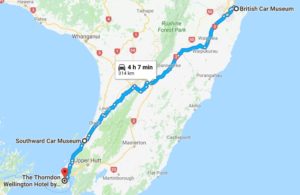
The Southward Car Museum is owned by Sir Len Southward, who began collecting cars in 1956. After many years collecting cars, this passion had turned into a full-time venture, and in 1979, Len opened the collection to the public in its current site. Sitting on 6 hectares of land, just off State Highway 1, the building was huge and dwarfed the Fiesta in comparison. Stepping out into the 30+ degree day did mean you were instantly sweating and making a dash to try and get yourself into some kind of shade.
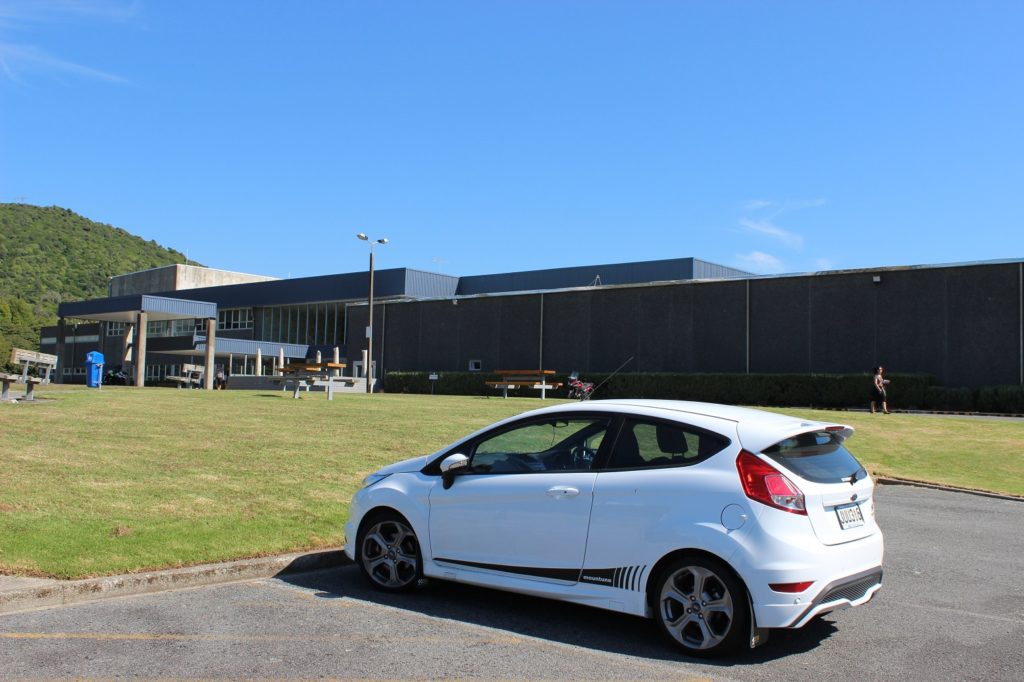
Before we entered the building, a Ferrari 308 GTS pulled up under the canopy at the front – with a couple of the employees having just detailed the car and pulled it out to get some decent photos for their own website. I love the interiors of these old Ferrari’s – every component from the leather-wrapped handbrake to the switch-gear, through to the detail in the leather on the seats is just perfection. Then there’s that gated shifter!
Stepping inside the building, they had a few vehicles on display in the foyer. These included the very rare Carver One. I remember seeing one of these originally tested on Top Gear back in 2002 and both Richard Hammond & Jeremy Clarkson both thought it was such a cool vehicle to drive. The Carver leans into corners and is capable of 185 kilometers an hour. Unfortunately, the company went bankrupt in 2009 and ceased production. The other car on display was a Corvette Z06, which has a number of Z07 options. It was originally owned by a Doctor in the United States, before it was exported to New Zealand. It’s currently on display, but officially for sale if anyone is interested.
I started upstairs, where you could see the main floor of the museum. Everything was spotlessly clean.

Upstairs contains a large collection of motorbikes, and a collection of license plates from all over the world.


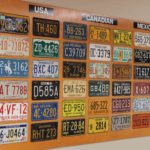
The main floor of the museum contained a number of varied makes and models spanning the last century. It’s hard to write about what was actually there, as there were so many spectacular cars that we’d all be here for weeks if I tried to document everything of significance. Instead, I’ll try my best to just show a handful of my favourites.
Let’s start with my favourite car on this floor, the Tatra 77A. The 77 was first produced from 1934-1935 in Czech Republic, with the 77A being produced from 1935-1938. The claim to fame with the T77, is that it’s the first serial-produced truly aerodynamically designed automobile. The car features a rear-mounted “hemi” V8 engine and used large amounts of lightweight magnesium alloy in the construction of this engine, as well as in the transmission, suspension & body of the car. The T77 even had independent rear suspension – something that the Ford Mustang has only just adopted in recent years, haha!
The T77A pictured below was imported from England by the Southward Museum in 1971 and has since been restored in their workshop. A truly spectacular vehicle.
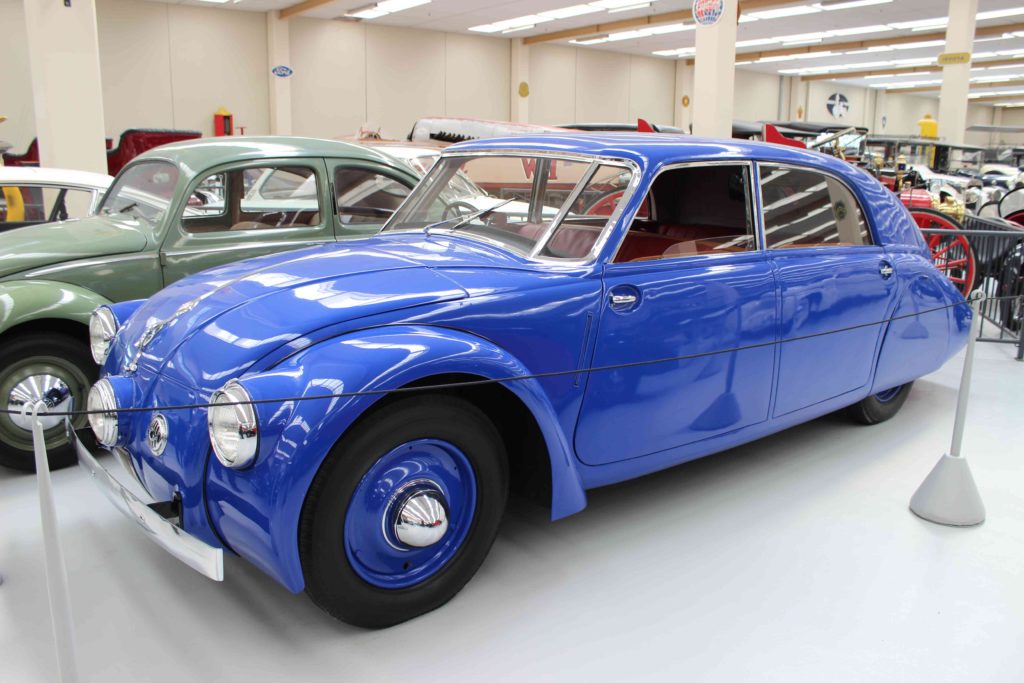
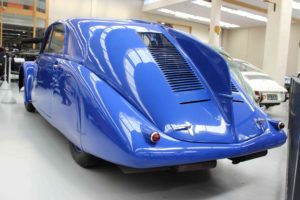
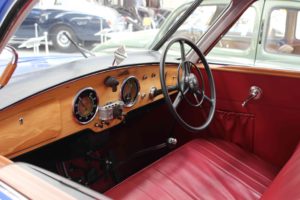

The rear wall of the main floor contained a number of high performance Japanese cars, from all makes and marques. One of my favourites was the Mitsubishi GTO, I always hankered after one of these when I was a young teenager. The GTO featured four-wheel drive, four-wheel steering, active aerodynamics (which adjusted the front & rear spoilers) and an adjustable sports exhaust.
It’s a pity that with the NSX, GTO & Supra, all models on display were automatics. It was good to see that the museum has continued to evolve and is starting to collect vehicles that appeal to both young and old visitors.
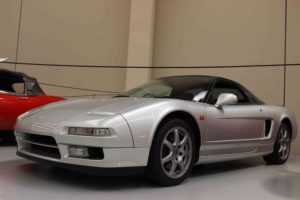
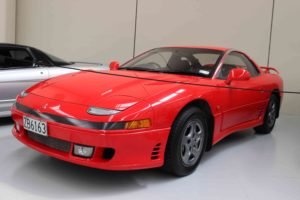

Below are a few shots from the main floor, including the genuine rally car that Ken Block used when he competed in the New Zealand winter rally in 2007. The Subaru Impreza STI (pictured), features factory lightweight items such as thinner door glass and an aluminium boot lid. At the completion of the rally, Ken used the car to do some stunts with the DC Shoes snowboard team at Snow Park. During one jump, Ken hit the ramp a bit too fast and over-shot the landing, which cracked his L2 vertebrae and nearly destroyed the car.
The next three cars are impressive pieces of machinery from each of the respective companies heydays. They’re the ultimate examples of luxury and extravagance.
1. Luxury and exuberance featured heavily with the Cord 810 Roadster. Featuring a 4.7L V8 engine & 4-speed electrically-selected semi-automatic gearbox, the Cord produced a whopping 125bhp! The Cord Corporation set out to produce cars with innovative technologies, believing they would sell well and turn a profit. The Cord 810 was one of the first American cars produced as front-wheel drive.
2. The stunning Chrysler Airflow Sedan, which featured a 4.9L inline 8-cylinder engine and 3-speed manual gearbox. When the car was being designed, Chrysler had a wind tunnel built so that they could test the aerodynamics of the car. Unfortunately, the car wasn’t a success with the public as nobody was yet ready for such an exotic shape & sales were slow, which eventually led Chrysler to pulling the pin on the Airflow (as well as it’s sister car, the DeSoto Airflow).
3. The Lincoln-Zephyr was produced by Ford from 1935-1942. It featured a 4.4L V12 engine and 3-speed manual gearbox, which was capable of 140 kilometers an hour. The Lincoln-Zephyr was one of the first streamlined cars and was produced to compete with the likes of the Chrysler Airflow & actually had a lower coefficient drag than it’s competitor.
One of the more unique cars was this interesting looking Dodge Coupe, with the body being made out of copper. The Dodge is a 1920 and was brought new by Mr Philip Lewis of Auckland, who then transformed the car by adding the new bodywork beaten out of copper and brass. The bodywork took 1,000 hours to complete and the car made its public debut in the Queen Street Christmas Eve parade of 1921 in Auckland.
From here, I ventured down to the basement level – where there were another assortment of interesting and varied cars.
My favourite car from the basement, the NUS Ro80. Released in 1967, the Ro80 won many awards, such as car of the year and motoring journalists were showering the brand with praise. It featured a 1L Wankel (rotary) engine, was front-wheel drive, had four-wheel disc brakes and superb suspension.
However, as good as the Ro80 was, it made NSU broke. The demand for the Ro80 was so great, that initially, there was a waiting list for potential owners. All of this crumbled though, when the rotary engine began to have a fearsomely short lifespan. Some engines lasted just days before they’d die, and few cars did more than 50,000 kilometers on their original engines.
The standing joke was that if you were driving an Ro80 and saw another, you’d not wave, but instead hold up the number of fingers that corresponded to how many engine you’d gone through.
1. The Japanese Prince Skyline was first launched in 1957, with lots of chrome trim, aiming to look like it’s American counterparts – such as the Chevrolets. They were also produced as 5-door station wagons. In 1966 the Prince Motor Company merged with Nissan and Nissan has continued to produce the Skyline since – now being one of Nissan’s most famous and loved cars.
2. A car that I’ve nearly brought a couple of times, the Reliant Scimitar. The one pictured is a GTE, which stands for Grand Touring Estate and was designed to be able to transport four adults in high levels of comfort over vast distances, with it’s huge fuel tank. It featured the 3L V6 Ford engine, which was used in cars such as the Capri. The Scimitar was a light car as it featured a fibreglass body on a steel chassis, making it capable of 0-100kph in 8.6 seconds. That’s still quick, even by today’s standards.
3. The Trekka, produced by the New Zelaland Motor Holdings company. 2,500 of these were produced and they featured a Skoda Octavia engine and drive train. The Trekka was lauched at the end of 1966 as an agricultural vehicle, but became popular with both rural buyers and urban tradesmen. Production eventually ended in 1973. It’s remembered for the unlikely success of its low quality manufacturing and simple design, which generally suited the purpose for which it was made. The Trekka is the only vehicle designed and manufactured in New Zealand to have entered commercial production for an extended period.
Below is the Ford GT ‘Consul’ Mk1 Cortina. The very first Mk1 Cortinas, were actually Consul Cortinas, which is how you can differentiate the very early cars. This car was imported by the Ford Motor Company of New Zealand for the Southward Lesco Racing Team to compete in the first 6 hour race at Pukekohe Raceway. Once imported, it was run in from Monday evening to Saturday morning, clocking up a whopping 4,800 miles! The engine was then completely stripped, checked & reassembled by Frank Hamlin and Kerry Grant and then driven through to Auckland to compete in the race.
It finished first in the price index and second overall, averaging 63mph. Since then, the car has done over 90,000 miles and hasn’t had the head off since before the race. A true piece of Kiwi history.
My final pick for the day is the Toyota Sera, which was Toyota’s first entry in the domestic market for novelty cars that was flourishing in Japan in the early 90s. The Sera was based on the Toyota Starlet and featured a 1500cc engine, gull-wing doors and a sleek body. Only 15,000 cars were produced, when Toyota wound up production in 1993. The Sera was never officially imported into New Zealand as it didn’t comply with our safety standard, but this car was imported by Toyota New Zealand to be used a show car and has since been donated to the Southward Museum by Toyota NZ.
Over the years, a number of private parties have imported cars into the country and every now and then one will come up for sale. A pretty unique car.
I thoroughly enjoyed my visit through the museum and could have happily spent another few hours wandering around examining all of their exhibits.
Visiting the British Car Museum
Up early on Monday morning, we hit the road for our first destination of the day, the British Car Museum, just out of Napier.
The ST sitting by the Havelock North sign, about 5 or so kilometers from the museum.
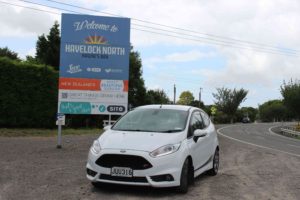
The ST parked up outside the Museum.
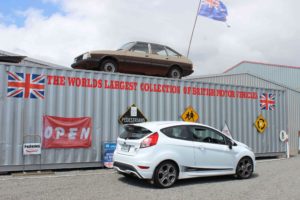
His claim to fame with the British Car Musuem is that it is the largest collection of British vehicles in the world. The owner, Ian, told me that he doesn’t know of any other collection, this size, in the world with only British vehicles. He’s constantly adding to the collection too, with a number of cars purchased in recent months.
There sheer number of cars was staggering and Ian has many stacked and racked throughout the venue. Just about every car sitting on floor level was supported by axle stands. The local auto store must love him!
Two of Ian’s favourite cars in the museum. The first is his Jaguar S Type, which he brought brand new in 2003 and has since only done 8,000 kilometers in. It was like new. The other was his 1963 Mini, which was his first ever brand new car – purchased soon after he has completed his apprenticeship as a youngster. The Mini wasn’t in ‘factory’ condition, but all the modifications were done soon after he purchased it, including the chrome down the side and also the spats that he had made and painted up for the rear wheels.
Another interesting vehicle was this Rover 75, which had been gifted by a guy in the UK before his passing. Ian had to pay to have the car shipped over from the UK & also had to pay some import taxes back here, so it certainly wasn’t the cheapest. I’m sure the previous owner will be pleased that his car is in such a nice collection now.
Aside from just cars in the museum, Ian had lots of other little collections going on. A number of the vehicles had period magazines, brochures & advertisements sitting on their bonnets for you to look at. Some of these classic magazines were pretty interesting. I even managed to find an original road test of the Mk2 Cortina:
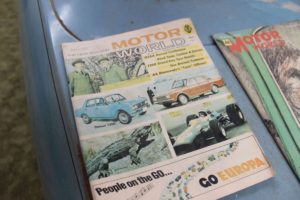

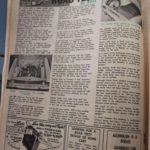
I also found this magazine with the Honda Aerodeck on it. The Aerodeck was a 2-door Honda Accord, in shooting-brake guise. Sold between 1986 & 1989, it’s no wonder that we don’t ever see these on the road. Before reading the article below, I hadn’t heard of this car, let alone seen one in the flesh – but I was intrigued because of just how unusual & rare it is. The Wikipedia page provides a little more information for those that are interested. Upon checking the license plate, the car featured in the article was still in use in 2016 with a recorded 233,000 kilometers. Between 2014 – 2016 it looked as though the car was averaging 140 kilometers each day, so suspect it’s still going strong today, possibly with 326,000 kilometers if the current owner kept to his recent form!
We then popped upstairs, where Ian demonstrated a couple of his player pianos. These are usually powered by foot bellows, but the one pictured Ian had re-powered with an old vacuum cleaner that could blow air out. This saved him having to pump the foot bellows. I wouldn’t be surprised if he had the largest collection of musical rolls in New Zealand – he said that there’s still a company he can buy them from in the US. He had me search through one of the stacks, where I eventually located the ‘Invercargill March’, which he proceeded to have the piano play itself for us.
Another interesting segment in the Museum, is his collection of over 38 Morris Minors – most of which are in some shade of green. Each of the Morris Minors features a window sheet, with the name of one of his great nieces or nephews. He told us that this will stop them squabbling over which car they get when he passes.
Pictured above are his large number of car manuals and his massive license plate collection. He has tried to assemble all New Zealand license plates from the conception of registration. He explained that originally you received a license plate every year when you registered your car, whereas, now we keep the same plate and just insert our new registration license in the window cards of our car.
I took the drivers seat of the old local fire engine that Ian had obtained. The picture on the right is a period picture from back in the 20s (I think).

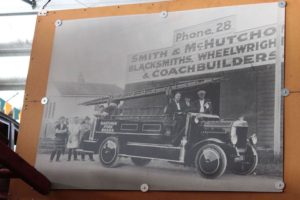
Ian was a great wealth of knowledge and truly passionate about his collection. Thanks for sharing this with the public, I hope to come back and visit in another couple of years.
Wellington – Sightseeing & Family
The main event for the weekend, the wedding, was on Saturday afternoon at 2pm. Since we had a few hours to kill, we thought we’d head to the waterfront in Wellington and also visit the renowned ‘Te Papa’ museum.
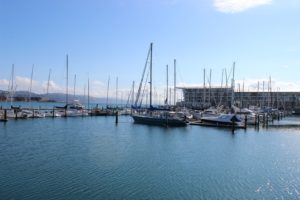
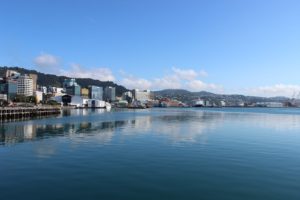
As you can see from the photos above, the weather turned it on and we had some pretty hot temperatures. We were a little early for the museum, so decided to check out some of the local shops. Pictured below is my uncles Tony & Gurv, as well as Dad – posing by the Cuba sign down Cuba Street.
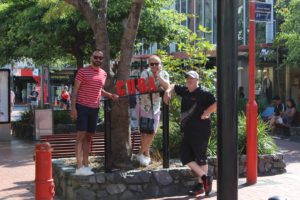
After a bit of shopping, the musem had opened, so we returned. At the moment they’re running an exhibition called ‘brickman wonders’, which is like lego heaven. They’ve had a bunch of master lego designers/creators, assemble these amazing pieces of artwork. Well worth the $20 a ticket we paid to get in. Here are some of my favourites:
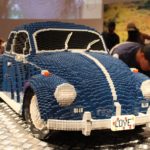

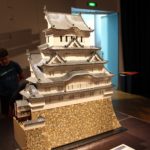



The best looking one had to be the replica of the Titanic sinking:
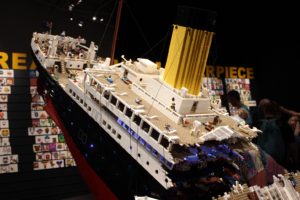

From one of the upper floors of the museum, I happened to catch a panther black Fiesta ST parked down on one of the streets. Guess they’re as common as muck!
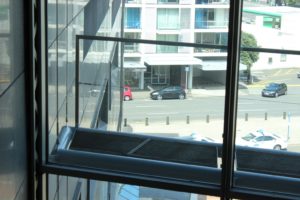
After the museum visit, we grabbed a bit of lunch before heading to the wedding. I had a jalopeno bagel with chicken.

The wedding was a pretty entertaining event, with my cousin, Josh, opting to sing his vowels in a song mashup. Can’t say I’ve seen that one before! After the ceremony was over, we headed back to the reception venue for a few hours before Josh & his new wife, Tarsh returned from their photos. This was followed by dinner, speeches & what the MC kept referring to as ‘the last dance’ – we had a good laugh when he accidentally called it that a few times!
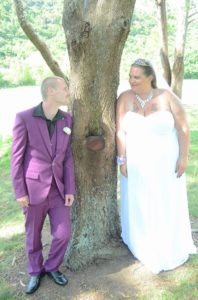
The following morning (Sunday), we were pre-booked for a parliamentary tour. Our hotel wasn’t far from parliament, so we left the car behind and walked down.
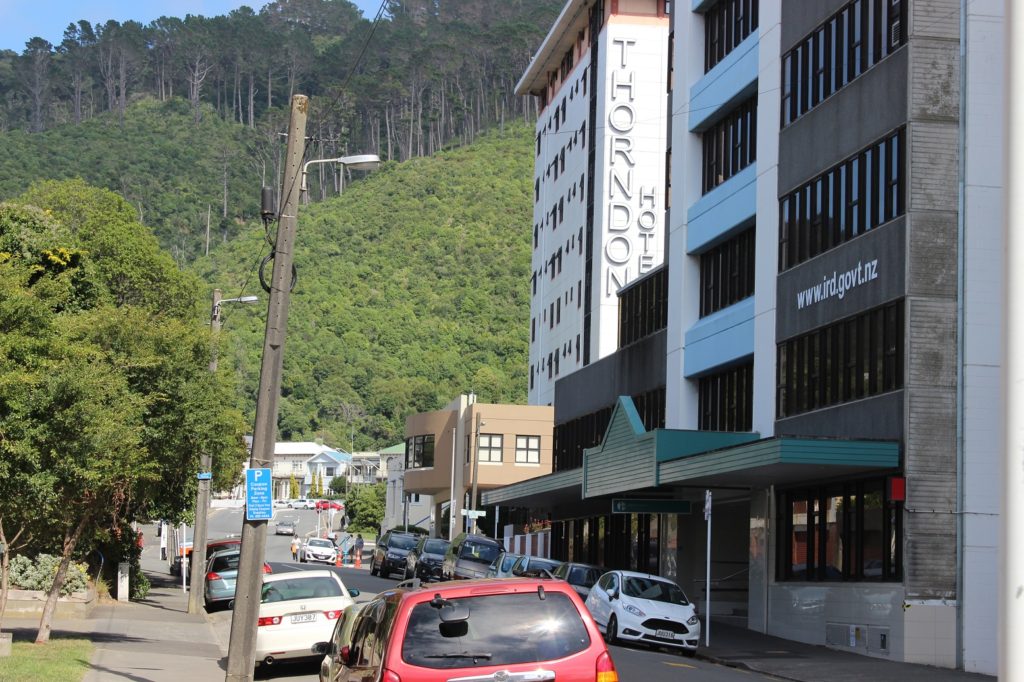
The ST sitting street-side for the day, as it was left at the hotel.
On the walk to the city centre, I spotted this poster on a fence, which shows Ford now trying to push customers away from manual transmissions. It’s a dying artform!
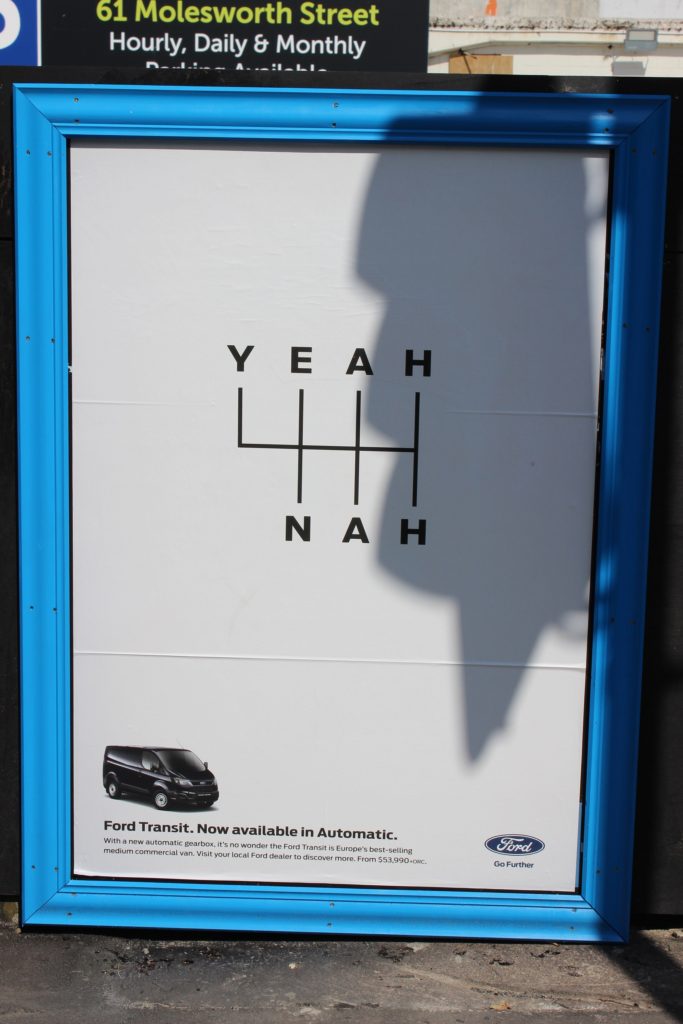
The parliament buildings, with the left-hand building named ‘the beehive’. It obtained this name after the architect made a small-model to demonstrate what it would look like out of a packet of ‘beehive’ matches. Unfortunately, we were unable to take in any phones, cameras, hats etc. as you have to go through rigorous safety checks, like you would at an airport. Dad set off a few alarms and had his “multiple” pocket knives he carries removed!
After the tour, we headed back to the waterfront, as we were catching up with Dad’s side of the family for a bit of lunch before everyone started leaving town again. We had a reservation at one of the bars, Macs, that overlooked the waterfront. The inside of Mac’s bar & restaurant was an eclectic mix of furniture and ornaments.
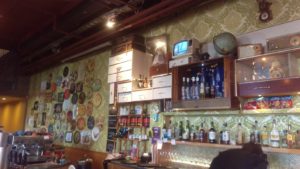
The waterfront was packed for a Sunday afternoon and they were a huge number of people “sea diving” into the water. Looked like great fun!

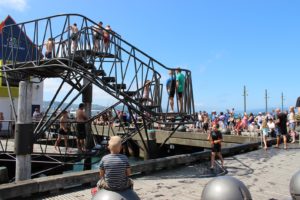
I did manage to snag another double chocolate Ice Cream to help cool me down in the outside heat!
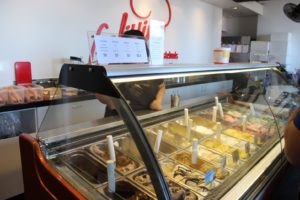
It was good to spend a few hours with Dad’s side of the family, as we don’t often get to catch up. The only person missing was Dad’s youngest sister, Sandra, who couldn’t make it. Pictured below (left to right) is Tony, Brendon, Nana, Michelle, Dad & Poppy. There was a few of us kids & grandkids at lunch as well, so it was good to catch up with everyone.
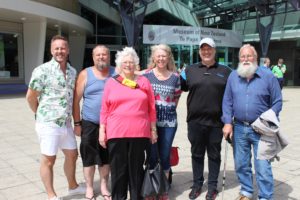
We said goodbye to everyone around half four and departed ways. As Tony & Gurv were staying at the same hotel as us, we all decided to head out for dinner. In the end we settled on Malaysian and I ordered the chicken curry. Was something a bit different.
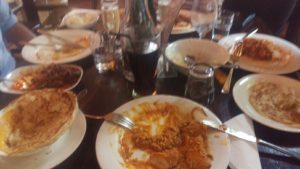
I’m going to need to go on a serious diet at the end of this holiday… Stay tuned, plenty more to come.
